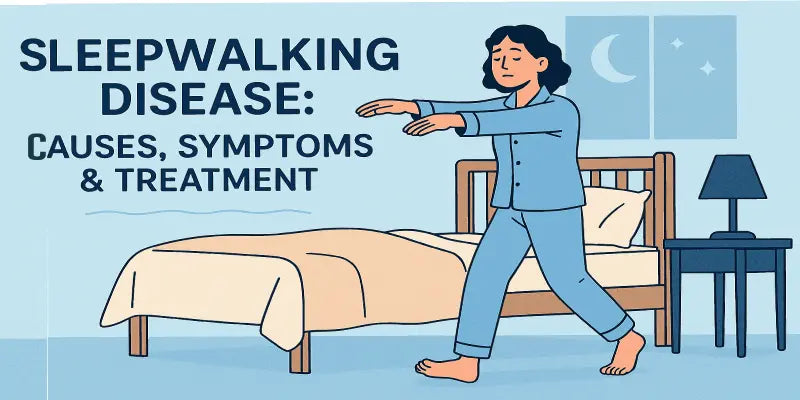
Maladaptive Daydreaming: Symptoms, Diagnosis, and Tips to Manage
It's completely natural to get lost in your thoughts from time to time. We often find ourselves distracted from the world around us as our minds wander. However, for some people, daydreaming can become so intense that it starts to interfere with daily life. This condition is known as Maladaptive Daydreaming (MD), and it affects many people more than we might realize.
In this blog, we’ll explore what maladaptive daydreaming is, its symptoms, how it’s diagnosed, and some helpful tips for managing it.
What is Maladaptive Daydreaming?
aladaptive Daydreaming refers to a form of daydreaming that is excessive and can disrupt everyday life. Unlike regular daydreaming, which is a natural and harmless escape from reality, maladaptive daydreaming involves detailed, immersive fantasies that can lead to distress or problems with relationships, work, or school.
People with MD often spend hours lost in their imagination, creating intricate scenarios with elaborate characters and plots. These daydreams can feel incredibly real, and they can interfere with a person’s ability to focus on important tasks or interact meaningfully with others. For example, if you are someone suffering from maladaptive daydreaming, you lose track of time thinking about something in your mind.
Symptoms of Maladaptive Daydreaming
Recognizing maladaptive daydreaming can be tricky because daydreaming itself is a common activity. However, the key difference lies in the intensity and impact it has on daily life.
Here are some common symptoms of MD:
- Excessive Daydreaming: If someone spends several hours a day engaged in daydreams, often at the expense of time spent on work, studies, or social interactions.
- Vivid, Complex Fantasies: The dreams feel very real, you imagine specific characters, plotlines and scenarios, maybe related to real life or something completely unreal. These fantasies feel more real to you than your ordinary thoughts.
- Difficulty Controlling Daydreams: It could be difficult to stop yourself from daydreaming, even when you want to focus on something or to be more present, if suffering from MD.
- Emotional Attachment to Fantasies: You not only daydream about something but it also evoke strong emotions, such as joy, sadness, or excitement. It can make it hard for the person to let go of the fantasy world.
- Distress or Impairment: Those who suffer from MD, find it difficult to function effectively in daily life, including work or school responsibilities, relationships and self care.
- Physical Movements or Behaviors: Some individuals may exhibit repetitive behaviors, such as rocking back and forth, pacing, or hand movements, while daydreaming.
What Causes Maladaptive Daydreaming?
The reason behind maladaptive daydreaming is not known but it often leads to problems like anxiety, depression and other mental health conditions. Maladaptive daydreaming is not contagious as it is a mental health issue.
Also Read;- How to Lucid Dream: 5 Effective Methods
How is Maladaptive Daydreaming Diagnosed?
Maladaptive Daydreaming is not officially recognized as a mental health disorder in many diagnostic manuals, such as the DSM-5, but it has been gaining attention from researchers and mental health professionals. The condition was first identified by Dr. Eliezer Somer in the early 2000s, and since then, more studies have explored its effects.
Since there’s no official test for MD, diagnosis is typically based on the individual’s reported symptoms and history. A mental health professional, like a psychologist or psychiatrist, may conduct interviews and use questionnaires to assess whether the daydreaming is maladaptive and whether it’s causing significant distress or impairment.
The mental health professional can ask questions like:
- What do you dream about the most? How real are the dreams?
- Is it hard for you to stop yourself from daydreaming? And Do you want to stop yourself?
- How do your daydreams affect your daily life?
It is seen that those who suffer from maladaptive daydreaming may show symptoms of depression, social anxiety, general anxiety, dissociation, sleep disorders with ADHD and OCD.
Tips for Managing Maladaptive Daydreaming
If you find that your daydreaming is becoming problematic, there are several strategies that can help manage the condition. While there’s no one-size-fits-all solution, here are some useful tips:
Increase Awareness of Your Daydreaming Patterns
Keep a journal to track when and where you tend to daydream most. This can help you identify triggers or patterns, allowing you to address them more effectively. You can also write them in your mobile notes or record them to understand the reason behind the thoughts.
Set Time Limits
Try to set boundaries on your daydreaming time. This might mean dedicating a specific amount of time each day to indulge in your fantasies, and then consciously shifting your focus to other activities once that time is up. It can seem a little hard but if you stick to the time limits, you can effectively decrease your episodes of daydreaming.
Engage in Mindfulness Practices
Mindfulness techniques, such as meditation or deep breathing exercises, can help you stay grounded in the present moment and reduce the urge to daydream excessively. You can start your day with yoga or you can also go for a short walk to clear your mind.
Stay Busy and Engaged
Filling your day with purposeful activities, whether it’s work, hobbies, exercise, or socializing, can leave less room for daydreaming to take over. Keeping your mind occupied can help reduce the frequency and intensity of daydreaming episodes. So try to be as busy as possible. It also doesn't mean that you drain yourself in the process but try not to sit ideally for long.
Seek Professional Help
If your daydreaming is significantly affecting your life, speaking with a therapist or counselor can be incredibly helpful. Cognitive-behavioral therapy (CBT) and other therapeutic approaches may help you better manage your daydreaming tendencies.
Create a Healthy Routine
Structure and routine can help minimize daydreaming. Having regular sleep patterns, meal times, and activities can bring a sense of order and reduce the likelihood of getting lost in daydreams. Make a routine free from daydreaming and try to follow it constantly.
Set Realistic Goals
It is a difficult process to not daydream but setting small, achievable goals can provide a sense of accomplishment and encourage you to focus on the present moment, rather than retreating into an imaginary world.
Conclusion
Maladaptive daydreaming is a condition that can have a significant impact on daily life, but it’s important to remember that you’re not alone. By recognizing the symptoms, understanding the potential effects, and implementing strategies for managing the daydreams, you can regain control and improve your well-being.
Sleepsia is a pillow brand that is looking out for a way to improve their sales and sell their pillows and promote their brand through an instagram reel. Gives ideas for what could be done.








